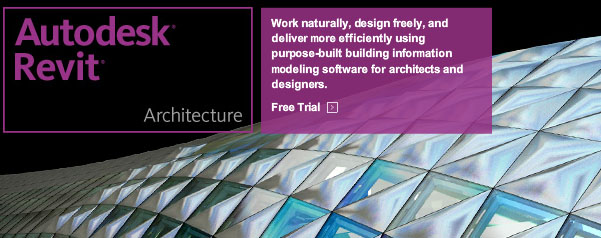Revit
Revit software helps you explore early design concepts and forms, and more accurately maintain your vision through design, documentation, and construction. Make a change, and it's automatically updated across the project. Use the essential building information modeling (BIM) data that Autodesk Revit Architecture software provides to support sustainable design, clash detection, construction planning, and fabrication.
How it Works
Revit is a single file database that can be shared among multiple users. Plans, sections, elevations, legends, and schedules are all interconnected, and if a user makes a change in one view, the other views are automatically updated. Thus, Revit drawings and schedules are always fully coordinated in terms of the building objects shown in drawings.
The base building is drawn using 3D objects to create walls, floors, roofs, structure, windows, doors and other objects as needed. Generally, if a component of the design is going to be seen in more than one view, it will be created using a 3D object. Users can create their own 3D and 2D objects for modeling and drafting purposes.
Small-scale views of building components may be created using a combination of 3D and 2D drafting objects, or by importing drafting work done in another CAD platform via DWG, DXF,DGN, SAT orSKP.
When a project database is shared, a central file is created which stores the master copy of the project database on a file server on the office's LAN. Each user works on a copy of the central file (known as the local file), stored on the user's workstation. Users then save to the central file to update the central file with their changes, and to receive changes from other users. Revit checks with the central file whenever a user starts working on an object in the database to see if another user is editing the object. This procedure prevents two people from making the same change simultaneously and prevents conflicts.

